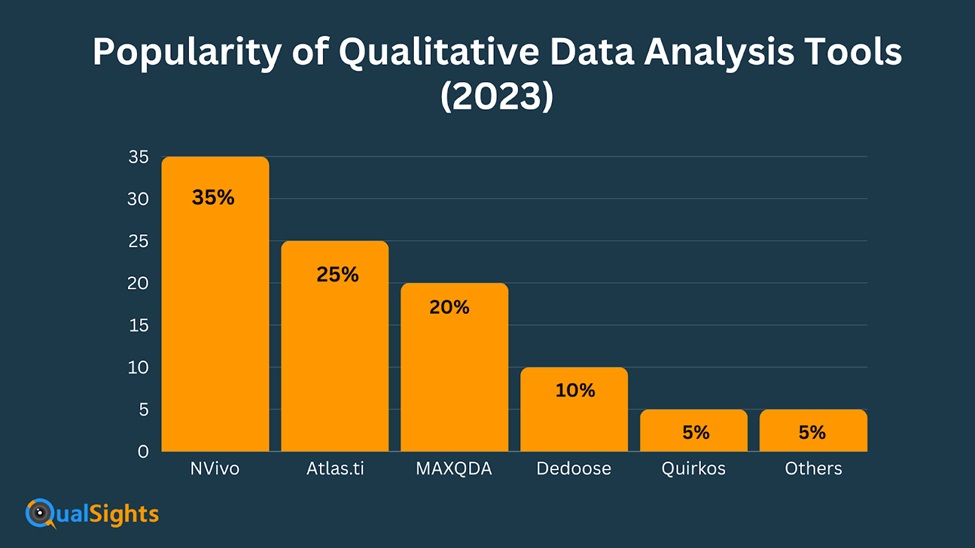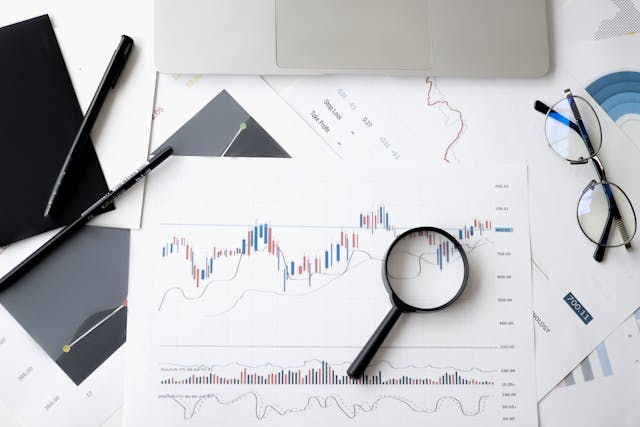Tracking Trends: Qualitative Time Analysis
Whereas quantitative analysis gives meaningful insights into numerical data, Qualitative time analysis offers a powerful way to uncover the hidden narratives and human experiences behind numerical data.
By delving into words, stories, perspectives, and other rich sources of information, this technique unlocks nuances that influence decision-making processes and fosters meaningful change.
Qualitative time analysis is a methodological approach that examines non-numerical data, such as interviews, focus groups, and open-ended survey responses, over a particular period of time.
These qualitative insights can help researchers to recognize consumer behaviors, market developments, and temporal transitions in patterns.
It is an invaluable resource for gaining critical knowledge about their stakeholders’ target audiences and broader ecosystems across all sectors, including marketing, finance, and healthcare.
Understanding the Core Components
Key Elements of Qualitative Time Analysis
- Identifying patterns: The ability to recognize recurring themes, sentiments and behaviors in qualitative data lies at the heart of qualitative time analysis. Patterns that may not be discovered by numerical data alone can be uncovered by analyzing transcripts, notes and other text sources with care.
- Temporal context: In this research, time is a key factor for analyzing how these patterns and themes transform over specific periods. This temporal dimension provides useful insights into how perceptions, attitudes, and behaviors change as a result of outside forces such as market conditions, social shifts or organizational changes.
- Data source(s): Qualitative time analysis uses different types of data such as; in-depth interviews, focus group discussions, open-ended survey responses or social media conversations among other sources of texts which are rich materials that when analyzed would provide sufficient information for interpretation and further examination of an important issue.
Techniques and Methodologies
Methodologies for Effective Analysis
- Thematic Analysis
This approach entails the identification, examination and reporting of patterns (themes) in qualitative data. Data are scrutinized keenly by the researchers to extract themes that can capture participants’ experiences, views and actions.
- Narrative Approaches
The narrative analysis concerns itself with stories and narratives that are contained within qualitative data. These narratives have their meanings, motives and feelings for the participants hence analyzing their content, structure or/and language helps understand them better.
- Analyzing Content
This is a method that seeks to count words, concepts or themes that appear in qualitative materials. Researchers can identify new patterns and trends due to categorical counting of specific attributes.
Practical Applications and Case Studies
Real-World Applications
- Marketing
Qualitative time analysis is very important for tracking changes in consumer behavior over time. This can be achieved by examining customer feedback, social media discussions and focus group sessions to understand the changing preferences, pain points, and buying decisions that enable marketers to fine-tune their strategies to keep pace with the change.
- Healthcare
Among other things, qualitative time analysis plays a crucial role in gauging patient satisfaction and treatment outcomes in health care practice. For instance, by analyzing patients’ stories, caregivers can identify areas for improvement, assess the consequences of new drugs or interventions as well as make sure that the care provided is centered on patients.
- Finance
Qualitative time analysis may be used by investors and financial analysts; it helps them understand market trends and investor sentiment. Based on the study of quarterly earnings call transcripts, news reports, and social media conversations, they can gain a better understanding of how the stock market works, identify associated risks or opportunities, and draw conclusions about which securities seem attractive at any given moment.
Tools and Software for Qualitative Time Analysis

Source:https://fastercapital.com/content/Qualitative-data-analysis-software--A-Comparison-of-the-Most-Popular-Tools-and-Platforms.html
Top Tools and Technologies
- NVivo: Developed by QSR International NVivo was specifically designed for qualitative research purposes. It has robust features for coding, sorting out as well as analyzing different forms of qualitative data like interviews, focus groups and documents thus making it efficient qualitative time analysis.
- Atlas.ti: To manage and analyze qualitative data in a comprehensive manner, Atlas.ti is a great tool. It can code and annotate texts, audio and videos; hence making it possible for researchers to appreciate the complexities of the data as well as drawing the relationships among them. Thus, it is often used in projects that involve qualitative analysis of time.
- MAXQDA: MAXQDA is an advanced software solution developed to suit mixed methods research and other qualitative analyses. It has a user-friendly interface that allows you to code, analyze, and visualize your qualitative data while tracking changes over time. Moreover, it also has some sophisticated features like automatic suggestions for coding and links with statistical packages that improve the effectiveness and accuracy of qualitative time-based analysis.
Challenges and Limitations
Common Obstacles
- Data Overload
Qualitative researchers frequently struggle to handle large amounts of text, audio or video files that come from diverse sources. When trying to ensure thoroughness and consistency in analyzing such material, this task becomes even more complex than initially thought thus necessitating robust tools/strategies to manage information.
- Subjectivity
In qualitative analysis subjectivity is expected since the researcher finds meaning in his/her own way from what he/she observes. However, ensuring objectivity with minimal bias remains one of the fundamental challenges facing those who engage in qualitative time-based studies.
- Temporal Limitations
Accurately capturing and analyzing changes over time can be a significant challenge, particularly when dealing with longitudinal studies or extended time periods. Ensuring consistent data collection and analysis methods over the course of the study is crucial for reliable insights.
Best Practices for Accurate Analysis
Expert Tips
- Clear Objectives: It is better to set up clear objectives and research questions before one embarks on a project of time analysis by qualitative method. This clarity guides the processes of data collection, analysis and interpretation which in turn produces focused and relevant insights.
- Regular Update: Qualitative data sources need to be continuously monitored and updated to effectively track trends and changes over time. Researchers have the opportunity through regular data collection and analysis to identify emerging patterns as well as adjust their approaches accordingly.
- Teamwork: In order for a qualitative time analysis to be effective, it always calls for collaboration between individuals from different fields of study and perspectives. As a result of involving people from diverse backgrounds, researchers can minimize biases, complement each other’s expertise, as well as acquire a more holistic understanding of the information.
Frequently Asked Questions (FAQs)
1. What is trend analysis in qualitative research?
Trend analysis in qualitative research is the process of identifying and examining patterns or trends within qualitative data sources, such as interviews, observations, or documents. It involves carefully reviewing the data to uncover recurring themes, topics, or concepts that emerge across different sources or participants.
The key steps in trend analysis include:
- Data collection: Gathering qualitative data through methods like interviews, focus groups, or observations.
- Data organization: Preparing the data for analysis by transcribing interviews or organizing field notes.
- Coding: Assigning codes or labels to segments of the data that represent specific ideas or themes.
- Pattern identification: Grouping related codes together and identifying overarching patterns or trends that cut across multiple data sources.
- Interpretation: Analyzing the identified trends, considering their potential meanings, and drawing insights from the data.
Trend analysis allows researchers to synthesize large amounts of qualitative data, recognize underlying themes and patterns, and develop a deeper understanding of the phenomenon under study. It is a crucial step in qualitative research, as it helps researchers make sense of complex, non-numerical data and uncover valuable insights.
2. What are the current trends and practices in qualitative research?
Qualitative research as an area of study is constantly changing and evolving, new trends and practices that have emerged. Online surveys have become crucial in qualitative research for collecting real-time, cost-effective feedback from participants, especially in in-home product testing (IHUTs).
- Mixed Methods Approaches: It is increasingly becoming common for researchers to combine qualitative data with quantitative data so as to get a better understanding of how complex these phenomena are.
- Digital and Online Methods: Netnography (studying online communities), virtual interviews or analyzing social media data are now some of the online methods that use by qualitative researchers.
- Participatory and Collaborative Approaches: Research participants are being charged with the responsibility of acting as research partners throughout the research process thus fostering more holistic inclusionary empowerment tactics.
- Visual and Arts-Based Methods: These days, scholars have started using visual forms such as photos, videos, and drawings in their qualitative studies so as to give an all-round representation of their research findings.
- Reflexivity and Positionality: The focus on reflexivity calls for acknowledgement by researchers that they have biases which need to be checked so as not to compromise transparency during the research process.
3. Why do you think that qualitative data analysis is a time-consuming process?
Many of the qualitative data analyses are usually time-consuming. This is why:
- Complexity of Data: Qualitative data, such as interviews, focus group transcripts, and open-ended responses, are rich in detail and nuance. It requires careful attention to understand these complex forms of data that differ from one another and this can take a lot of time.
- Manual Coding and Analysis: Though there exist software tools to assist in analyzing qualitative data; much still involves manually coding as well as categorizing and interpreting it. This process can be tedious and need significant investment of time.
- Iterative Nature: Often, researchers have to move back-and-forth between data collection, analysis, and interpretation during qualitative data analysis. Consequently, when new insights emerge researchers might have to revisit earlier information or collect further information thus extending the analysis process.
- Context and Subjectivity: Qualitative Data is deeply situated in context hence subject to multiple interpretations.Researchers must reflect deeply on their own positionality, consider what contextual factors come into play which calls for extensive reflection and analysis required for accurate meaningful interpretation.
- Collaborative Efforts: In many qualitative research projects, data analysis involves collaborative efforts among multiple researchers or stakeholders. Coordinating and reaching consensus on coding, themes, and interpretations can be a time-consuming endeavor.
- Depth and Rigor: Qualitative research demands a high level of depth and rigor in the analysis process. Researchers must thoroughly immerse themselves in the data, identify patterns and themes, and provide detailed descriptions and interpretations, which requires significant time and effort.
Conclusion
Qualitative time analysis is a powerful tool for revealing historical plots that drive human actions and social changes.
Researchers can deconstruct intricate qualitative data through the use of intensive methods coupled with software tools that fail to be revealed in pure quantitative methods.
Qualitative time analysis enables organizations to get an important perspective that enables them to comprehend the changing needs and wants of their stakeholder populations.
Organizations like businesses, healthcare providers, policymakers among others can have deeper knowledge about how varied human experiences are so that they can come up with strategies, products or even services that appeal most to some groups if they approach this in such a way.
Qualitative time analysis is a reminder amidst an increasing reliance on data-driven decision-making that every number tells a story.
Through this methodology, we can unlock the full potential of qualitative data enabling it to facilitate transformation and promote better knowledge about life.

